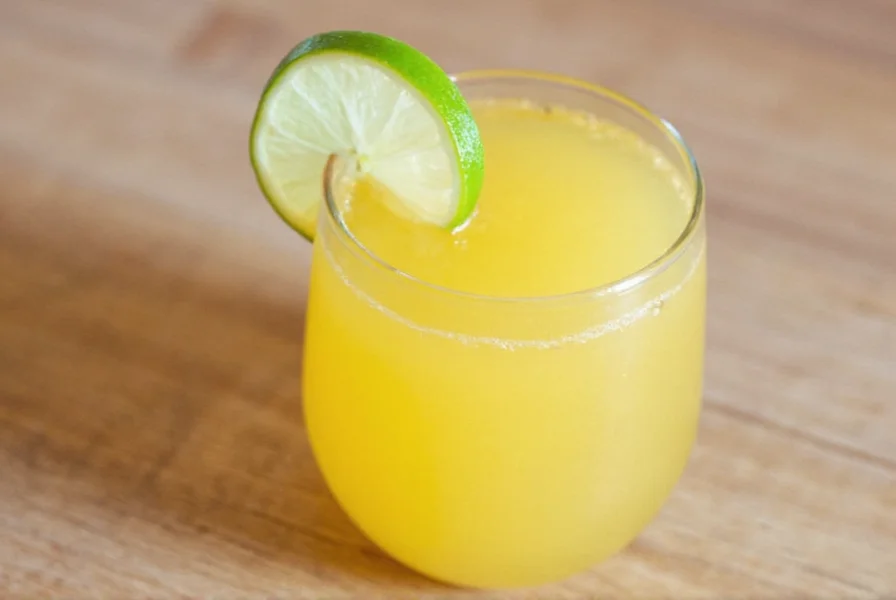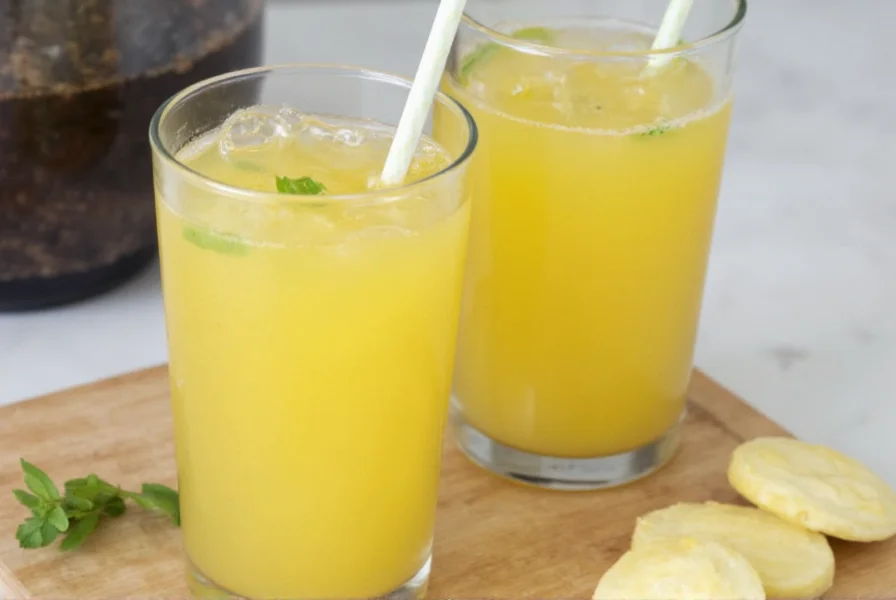The perfect ginger juice recipe requires just 4 ounces (113g) of fresh ginger root, peeled and roughly chopped, plus 1 cup of filtered water. Blend until smooth, then strain through a nut milk bag or fine mesh strainer. Yields approximately 1 cup of pure ginger juice that stays fresh for 3-4 days refrigerated. For a ginger shot, take 1-2 tablespoons daily.
Making fresh ginger juice at home is simpler than most people realize and delivers significantly more flavor and potency than store-bought versions. Unlike commercial products that often contain preservatives and added sugars, homemade ginger juice preserves the root's natural compounds in their most bioavailable form. This versatile ingredient works beautifully as a digestive aid before meals, a zesty addition to salad dressings, or the foundation for refreshing beverages.
Essential Ingredients and Equipment
For the best ginger juice recipe, quality ingredients matter. Select firm, plump ginger roots with smooth skin and minimal wrinkles. The heavier the root for its size, the juicier it will be. Avoid roots with soft spots or mold.
| Ingredient | Amount | Preparation Notes |
|---|---|---|
| Fresh ginger root | 4 oz (113g) | Peel only if non-organic; organic ginger skin contains beneficial compounds |
| Filtered water | 1 cup | Cold water helps preserve volatile compounds |
| Lemon (optional) | 1/2, juiced | Adds brightness and helps prevent oxidation |
Basic equipment needed includes a sharp vegetable peeler (if using non-organic ginger), chef's knife, cutting board, high-speed blender, and straining apparatus. While specialized ginger presses exist, a nut milk bag or fine mesh strainer works perfectly for home preparation without requiring additional kitchen gadgets.
Step-by-Step Ginger Juice Preparation
Follow these precise steps for optimal ginger juice extraction and flavor:
- Prepare the ginger: Wash thoroughly under cold water. Peel only if non-organic, as the skin contains valuable nutrients. Cut into 1-inch chunks for easier blending.
- Blend with water: Combine ginger chunks and cold filtered water in a high-speed blender. Process on high for 60-90 seconds until completely smooth with no visible fibers.
- Strain carefully: Place your nut milk bag or fine mesh strainer over a bowl. Pour the blended mixture through the strainer, then squeeze firmly to extract every drop of juice.
- Store properly: Transfer to an airtight glass container. For maximum freshness, add a squeeze of lemon juice to slow oxidation. Refrigerate immediately.

Popular Variations for Different Preferences
Once you've mastered the basic fresh ginger juice recipe, experiment with these tested variations that enhance both flavor and functional benefits:
- Ginger-Lemon Immunity Shot: Add the juice of one organic lemon per cup of ginger juice. The citric acid brightens the flavor while potentially enhancing nutrient absorption.
- Turmeric-Ginger Golden Juice: Blend 1-inch fresh turmeric root with the ginger for added earthiness and complementary compounds.
- Spicy Ginger-Cayenne: For those seeking extra heat, add 1/8 teaspoon cayenne pepper to the blender before processing.
- Sweetened Ginger Tonic: For a milder version, blend with 1-2 pitted dates or a teaspoon of raw honey after juicing.
Understanding Ginger's Natural Properties
Ginger contains gingerols, the bioactive compounds responsible for its distinctive flavor and traditional uses. The concentration of these compounds varies based on growing conditions, harvest time, and preparation method. Freshly prepared ginger juice contains higher concentrations of these compounds compared to dried ginger powder.
When selecting ginger for juicing, look for roots with a strong aromatic scent when scratched—this indicates higher volatile oil content. Younger "spring ginger" has thinner skin and a milder flavor, while mature ginger develops more intense heat and complex flavor notes.
Storage and Usage Guidelines
Proper storage significantly extends your homemade ginger juice's shelf life and maintains its quality:
- Refrigerate in an airtight glass container for up to 4 days
- Add lemon juice (1 tablespoon per cup of ginger juice) to reduce oxidation
- Freeze in ice cube trays for longer storage (up to 3 months)
- Always shake or stir before use as natural separation occurs
The most effective way to incorporate ginger juice into your routine is through consistent, moderate consumption. Many people prefer taking 1-2 tablespoons as a morning shot, while others blend it into smoothies or mix with sparkling water for a refreshing beverage. For culinary applications, ginger juice works beautifully in marinades, salad dressings, and even baked goods where you want ginger flavor without fibrous texture.
Troubleshooting Common Ginger Juice Issues
Even with this simple ginger juice recipe, you might encounter these common challenges:
- Weak flavor: Increase ginger-to-water ratio or use more mature ginger roots with stronger flavor profiles.
- Excessive heat: Peel organic ginger (the skin contains more pungent compounds) or blend with a small apple to mellow the flavor.
- Low yield: Ensure you're using enough water during blending—too little water prevents proper extraction.
- Rapid discoloration: Always add citrus immediately after juicing and store in an opaque container.
Frequently Asked Questions
How much ginger juice should I consume daily?
Most people safely enjoy 1-2 tablespoons of ginger juice daily. Start with 1 tablespoon to assess tolerance, especially if new to ginger consumption. The optimal amount varies based on individual sensitivity and intended use.
Can I make ginger juice without a blender?
Yes, you can make ginger juice without specialized equipment. Grate peeled ginger using a microplane, then squeeze the pulp using cheesecloth or a clean tea towel. This manual method yields slightly less juice but works effectively for small batches.
Why does my ginger juice separate?
Natural separation occurs because ginger juice contains both water-soluble and oil-soluble compounds. This is normal and doesn't indicate spoilage. Simply shake or stir before using. Adding lemon juice helps reduce separation.
What's the difference between ginger juice and ginger shots?
Ginger juice refers to the pure liquid extracted from ginger root, while ginger shots typically contain additional ingredients like lemon, honey, or turmeric. A ginger shot is usually a smaller serving (1-2 tablespoons) of concentrated ginger preparation taken for specific purposes.
Can I use dried ginger to make juice?
Dried ginger powder doesn't produce true juice as it lacks the necessary moisture content. For authentic ginger juice, fresh ginger root is essential. Dried ginger works well for teas or cooking but cannot be juiced using standard methods.











 浙公网安备
33010002000092号
浙公网安备
33010002000092号 浙B2-20120091-4
浙B2-20120091-4